

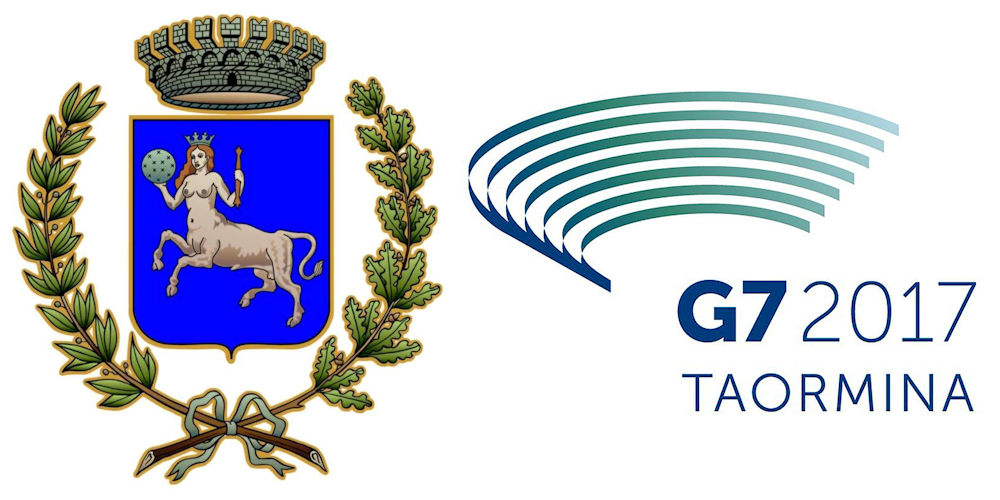
 he first name of the town was Tauromenium, which is up to now preserved even if transformed in Taormina, and it means built up area in Tauro the mountain upon which it rose. According to the historian Diodoro, Siculians and Greeks too gave that name to the town. But there are a lot of legends around the origin of the name. One of these tales is about a Minotauro, which is represented in ancient coins, and by which the name could derive.
Another evokes two princes from Palestina, Taurus and Menia, who would have founded the town, giving it the Tauromena name. Around Taormina there are other many legends. Some of them have Pitagora as protagonist, who would have spoken in the same day to Taormina and to Metaponto, would have made Taormina adopt the laws of Caronda, would have placated the erotic furies of a young taorminese playing his magic flute.
he first name of the town was Tauromenium, which is up to now preserved even if transformed in Taormina, and it means built up area in Tauro the mountain upon which it rose. According to the historian Diodoro, Siculians and Greeks too gave that name to the town. But there are a lot of legends around the origin of the name. One of these tales is about a Minotauro, which is represented in ancient coins, and by which the name could derive.
Another evokes two princes from Palestina, Taurus and Menia, who would have founded the town, giving it the Tauromena name. Around Taormina there are other many legends. Some of them have Pitagora as protagonist, who would have spoken in the same day to Taormina and to Metaponto, would have made Taormina adopt the laws of Caronda, would have placated the erotic furies of a young taorminese playing his magic flute.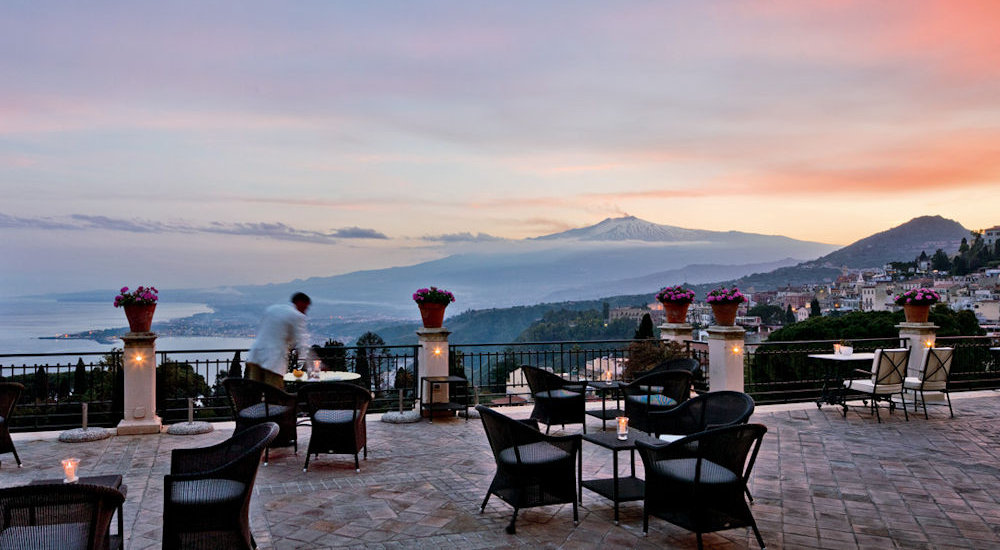
 uy de Maupassant in "La Vie errante", 1885, wrote: "if somebody might pass one day only in Sicily and asked: What should I visit? I would answer without hesitate: Taormina". Perfumed with zagara and jasmines, Taormina became through the centuries, with its wonderful views, with the sweetness of its climate, the rich history and precious monuments, a tourist international centre, more and more famousand wanted. It would be more correct, however, to say that Taormina was born touristic. The Siculi had chosen it as their home city. And after them the Greeks, Romans, Byzantines and Saracens, in other words all its conquerors, inhabited Taormina for long periods and not only because of political vicissitudes.
uy de Maupassant in "La Vie errante", 1885, wrote: "if somebody might pass one day only in Sicily and asked: What should I visit? I would answer without hesitate: Taormina". Perfumed with zagara and jasmines, Taormina became through the centuries, with its wonderful views, with the sweetness of its climate, the rich history and precious monuments, a tourist international centre, more and more famousand wanted. It would be more correct, however, to say that Taormina was born touristic. The Siculi had chosen it as their home city. And after them the Greeks, Romans, Byzantines and Saracens, in other words all its conquerors, inhabited Taormina for long periods and not only because of political vicissitudes.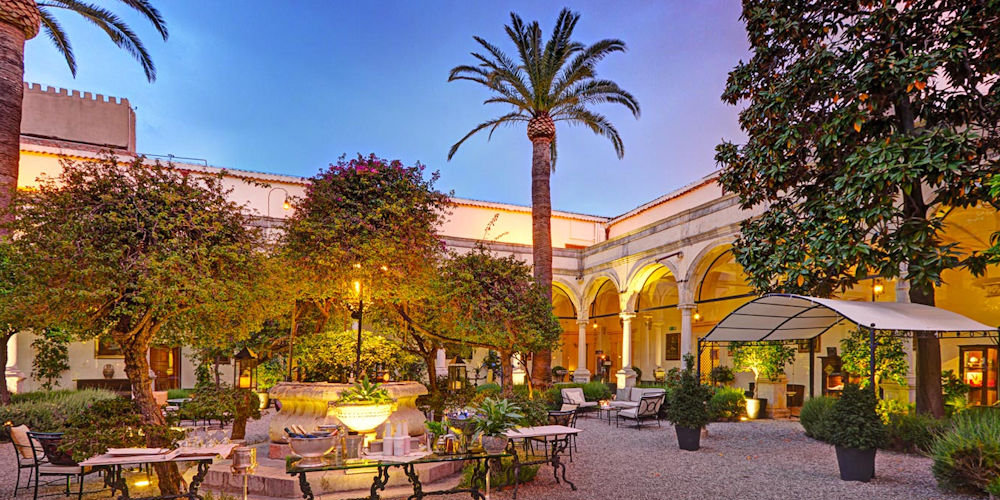
 n 1904 the most important hotels in Taormina, as it results in a publication printed in New York, were Hotel San Domenico, Hotel Timeo, Hotel Metropole, Hotel Castello a Mare, Hotel Naumachie, Hotel Victoria.
n 1904 the most important hotels in Taormina, as it results in a publication printed in New York, were Hotel San Domenico, Hotel Timeo, Hotel Metropole, Hotel Castello a Mare, Hotel Naumachie, Hotel Victoria.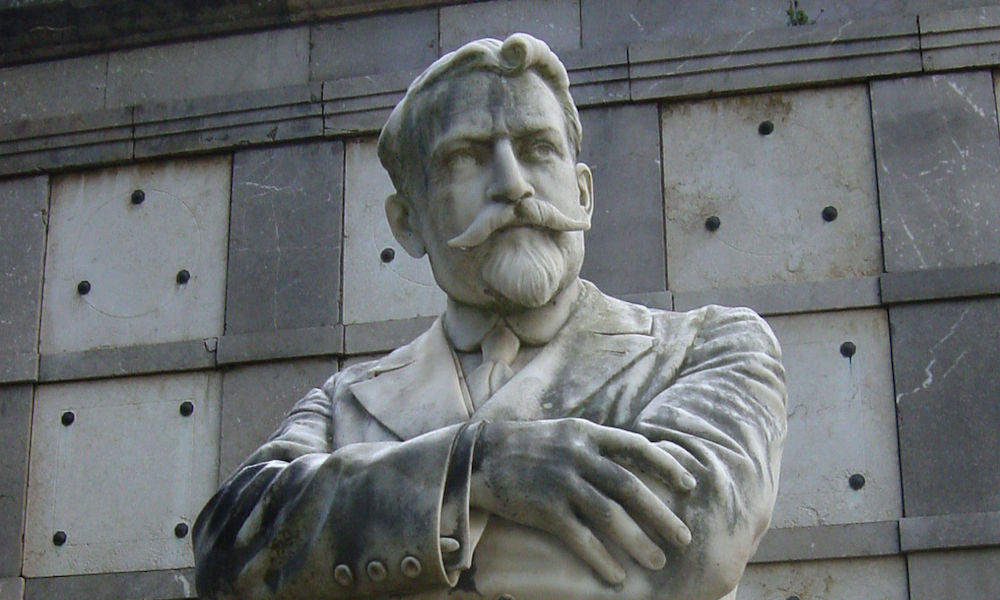
 aormina is famous as an international tourist centre thanks to Otto Geleng, a young red-haired Prussian painter, best known in his hometown of Berlin for his fine paintings, which he composed and painted in Italy but exhibited in Germany.
aormina is famous as an international tourist centre thanks to Otto Geleng, a young red-haired Prussian painter, best known in his hometown of Berlin for his fine paintings, which he composed and painted in Italy but exhibited in Germany.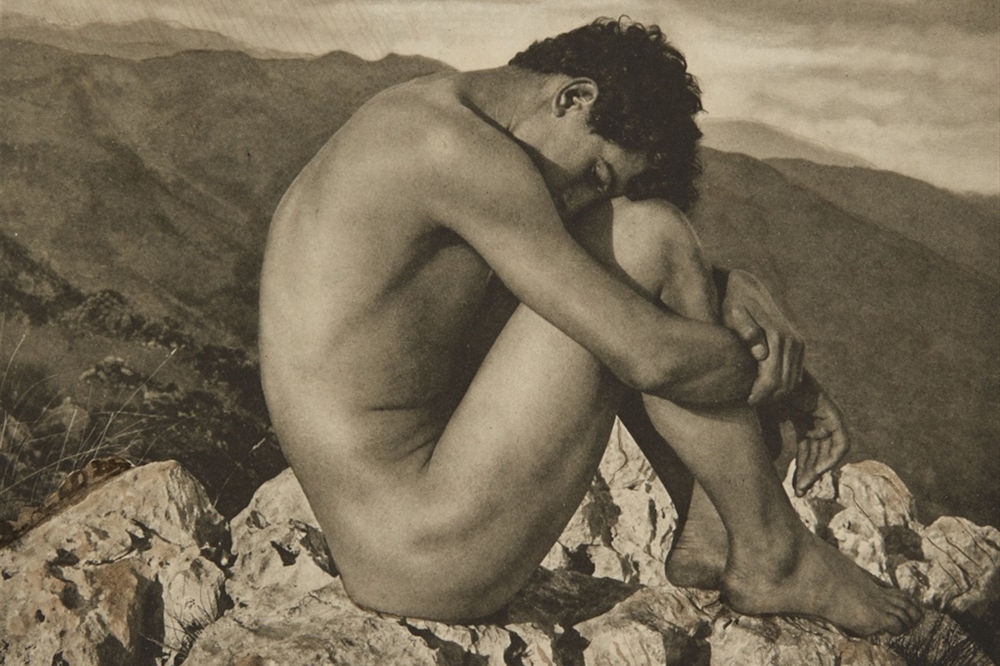
 n the late 19th century, another German, Wilhelm von Gloeden, had his photographs distributed all over the world, especially those of nude boys adorned with crowns of laurel which made Berlin's upper classes go into raptures.
He was claimed to be minor German aristocrat from Mecklenburg. Suffering from what appears to have been tuberculosis, he came to Taormina in 1876.
He was wealthy and also scrupulously shared the proceeds of his sales with his models, providing a considerable economic boost in this comparativily poor region of Italy, which might explain why the homosexual aspects of his life and work were generally tolerated by the locals.
n the late 19th century, another German, Wilhelm von Gloeden, had his photographs distributed all over the world, especially those of nude boys adorned with crowns of laurel which made Berlin's upper classes go into raptures.
He was claimed to be minor German aristocrat from Mecklenburg. Suffering from what appears to have been tuberculosis, he came to Taormina in 1876.
He was wealthy and also scrupulously shared the proceeds of his sales with his models, providing a considerable economic boost in this comparativily poor region of Italy, which might explain why the homosexual aspects of his life and work were generally tolerated by the locals.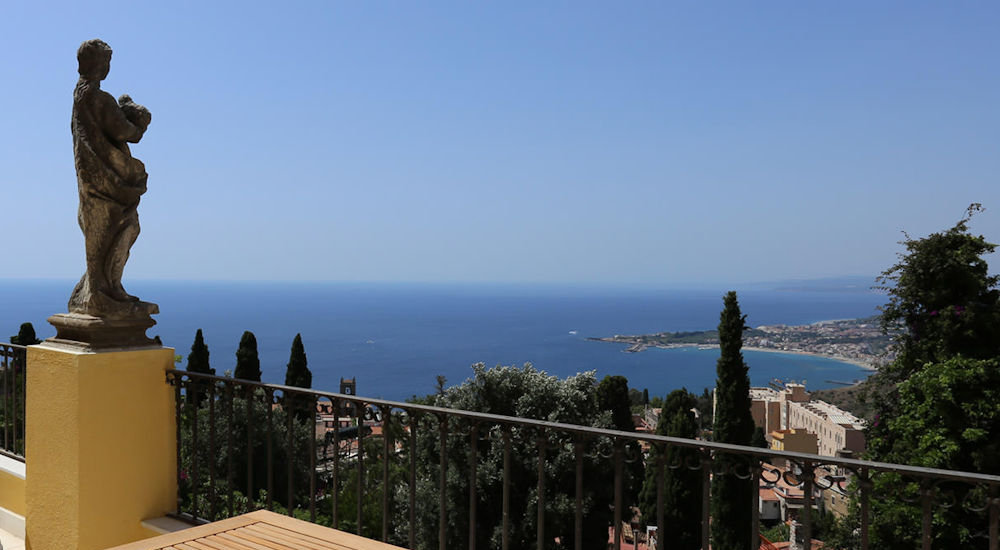
 etween 1948 and 1999 the English writer Daphne Phelps lived in the Casa Cuseni designed and built by Robert H. Kitson in 1905, and entertained various friends including Bertrand Russell, Ronald Dahl, and Tennessee Williams.
Daphne Phelps, who has died aged 94, was for nearly 60 years the dutiful custodian and hospitable locandiera of Casa Cuseni, the villa built a century ago by her uncle, the artist Robert H. Kitson.
etween 1948 and 1999 the English writer Daphne Phelps lived in the Casa Cuseni designed and built by Robert H. Kitson in 1905, and entertained various friends including Bertrand Russell, Ronald Dahl, and Tennessee Williams.
Daphne Phelps, who has died aged 94, was for nearly 60 years the dutiful custodian and hospitable locandiera of Casa Cuseni, the villa built a century ago by her uncle, the artist Robert H. Kitson.
 he family fortune was built around Kitsons of Leeds, locomotive manufacturers from the 1830s. By the 1890s, Daphne's mother was on her way up to the stimulating company of Newnham College, Cambridge, and met Alys and Bertrand Russell, who put her name forward to the Fabian Society, and Sidney and Beatrice Webb, for whom she undertook research for their history of English local government. Marriage, 3 daughters and a son, and the depressive impact of the first world war on their father, curtailed her activities and profoundly affected Daphne.
After St Felix School, Southwold, Suffolk, she trained in psychiatric social work at St Anne's College, Oxford, and the London School of Economics. Seeking further experience, she embarked for New York in 1939.
The war blocked her return until August 1941, and her hand-to-mouth existence included taking a homesick Benjamin Britten for a drive on Long Island and enjoying the hospitality of the Russells on Lake Tahoe, and in the bizarre stockade of the Barnes Foundation, near Philadelphia.
Back in London, she worked in Sir Solly Zuckerman's team, researching the effects of the blitz, and then at the London Hospital before joining the West Sussex child guidance service, set up by her guru from the LSE, Dr Kate Friedlander.
The death of her uncle Robert in September 1947 redirected Daphne's life. He had just returned to Casa Cuseni, which had been commandeered in turn by Italian fascists, the German high command, Lieutenant Alan Whicker's Army Film Unit, and, as a rest camp, by a Canadian regiment. She went to sort out the estate and sell up, but the sale fell through, and by then she had a good working relationship with her uncle's cook. She reduced costly commitments, fended off local suitors with an eye on her inheritance and found she could just afford to live there if she had studio flats built on the roof terrace and took paying guests. These were attracted through an extensive network of artists and academics. Their friends, children and grandchildren were to follow. The first guests included the artists Julian Trevelyan and his future wife, Mary Fedden. His father, Bob, probably introduced Kitson to Taormina where a Trevelyan aunt had settled many years before, and his cousin, Raleigh, became a regular visitor.
Gaylord Hauser took the house and reputedly entertained Greta Garbo. The Russells came, as did the novelist Jocelyn Brooke, Dame Janet Vaughan and other Somerville College alumni, Alison "Monroe of Arabia" and Janet Adam Smith, and Robina Addis of the World Federation for Mental Health. Dennis Mack Smith of All Soul's College, Oxford, drafted his History of Sicily at Casa Cuseni. Bob Macrae of Toronto University drafted his study of John Stuart Mill there.
Daphne had misgivings about some guests, such as German matrons whose songs she associated with the Hitler Youth, and she kept out Caitlin Thomas, widow of Dylan, with her clinking bottles. But she always found room for the wayward Kentucky artist, H. Faulkner, and his menagerie, which sometimes included Tennessee Williams.
he family fortune was built around Kitsons of Leeds, locomotive manufacturers from the 1830s. By the 1890s, Daphne's mother was on her way up to the stimulating company of Newnham College, Cambridge, and met Alys and Bertrand Russell, who put her name forward to the Fabian Society, and Sidney and Beatrice Webb, for whom she undertook research for their history of English local government. Marriage, 3 daughters and a son, and the depressive impact of the first world war on their father, curtailed her activities and profoundly affected Daphne.
After St Felix School, Southwold, Suffolk, she trained in psychiatric social work at St Anne's College, Oxford, and the London School of Economics. Seeking further experience, she embarked for New York in 1939.
The war blocked her return until August 1941, and her hand-to-mouth existence included taking a homesick Benjamin Britten for a drive on Long Island and enjoying the hospitality of the Russells on Lake Tahoe, and in the bizarre stockade of the Barnes Foundation, near Philadelphia.
Back in London, she worked in Sir Solly Zuckerman's team, researching the effects of the blitz, and then at the London Hospital before joining the West Sussex child guidance service, set up by her guru from the LSE, Dr Kate Friedlander.
The death of her uncle Robert in September 1947 redirected Daphne's life. He had just returned to Casa Cuseni, which had been commandeered in turn by Italian fascists, the German high command, Lieutenant Alan Whicker's Army Film Unit, and, as a rest camp, by a Canadian regiment. She went to sort out the estate and sell up, but the sale fell through, and by then she had a good working relationship with her uncle's cook. She reduced costly commitments, fended off local suitors with an eye on her inheritance and found she could just afford to live there if she had studio flats built on the roof terrace and took paying guests. These were attracted through an extensive network of artists and academics. Their friends, children and grandchildren were to follow. The first guests included the artists Julian Trevelyan and his future wife, Mary Fedden. His father, Bob, probably introduced Kitson to Taormina where a Trevelyan aunt had settled many years before, and his cousin, Raleigh, became a regular visitor.
Gaylord Hauser took the house and reputedly entertained Greta Garbo. The Russells came, as did the novelist Jocelyn Brooke, Dame Janet Vaughan and other Somerville College alumni, Alison "Monroe of Arabia" and Janet Adam Smith, and Robina Addis of the World Federation for Mental Health. Dennis Mack Smith of All Soul's College, Oxford, drafted his History of Sicily at Casa Cuseni. Bob Macrae of Toronto University drafted his study of John Stuart Mill there.
Daphne had misgivings about some guests, such as German matrons whose songs she associated with the Hitler Youth, and she kept out Caitlin Thomas, widow of Dylan, with her clinking bottles. But she always found room for the wayward Kentucky artist, H. Faulkner, and his menagerie, which sometimes included Tennessee Williams.
 aphne provided a heaven for the young people who came with her nephew to support those made homeless by the Belice valley earthquake of 1968, and the Italian archaeologists whore vealed the ancient Greek city at Gela. American guests included Alfred Barr of New York's Museum of Modern Art and academics such as Bette and John McAndrew, the architectural historian and founding director of Save Venice. Bette McAndrew was so impressed by Daphne's Venice in Peril fundraising, that she left Daphne the residue of her estate. This enabled her, in the 1980s, to refenestrate the front of Casa Cuseni. Daphne did not publish her recollections of her uncle's close friend, Don Carlo Siligato, and never wrote up her scabrous tales about the Princes of Biscari who lived next door for some years, but her accounts indicate her close integration into Sicilian life. She was on good terms with the same Mafia boss as her uncle. And she is remembered with affection for continuing her uncle's support for the hostel for the aged poor, recommending struggling restaurants and shops to her guests, and patronising the now renowned Macri marionette theatre of Acireale. Daphne found a soul mate in her housekeeper, Concetta Cundari, who shared her love of horticulture, cooking, children and dogs, and was given the house at the garden gate for her family. When aroused, Daphne was formidable, and had no difficulty gathering a petition against the demeaning appendage of her uncle's name to an unkempt cul-de-sac. The Taormina Comune transferred it to a prominent highway. When Daphne had to give up travelling to England, she asked Concetta to implement her donation of her uncle's sketchbooks and a selection of his watercolours to Leeds University, for which Kitson had commissioned Brangwyn to design the ceremonial verge on its foundation in 1905.
aphne provided a heaven for the young people who came with her nephew to support those made homeless by the Belice valley earthquake of 1968, and the Italian archaeologists whore vealed the ancient Greek city at Gela. American guests included Alfred Barr of New York's Museum of Modern Art and academics such as Bette and John McAndrew, the architectural historian and founding director of Save Venice. Bette McAndrew was so impressed by Daphne's Venice in Peril fundraising, that she left Daphne the residue of her estate. This enabled her, in the 1980s, to refenestrate the front of Casa Cuseni. Daphne did not publish her recollections of her uncle's close friend, Don Carlo Siligato, and never wrote up her scabrous tales about the Princes of Biscari who lived next door for some years, but her accounts indicate her close integration into Sicilian life. She was on good terms with the same Mafia boss as her uncle. And she is remembered with affection for continuing her uncle's support for the hostel for the aged poor, recommending struggling restaurants and shops to her guests, and patronising the now renowned Macri marionette theatre of Acireale. Daphne found a soul mate in her housekeeper, Concetta Cundari, who shared her love of horticulture, cooking, children and dogs, and was given the house at the garden gate for her family. When aroused, Daphne was formidable, and had no difficulty gathering a petition against the demeaning appendage of her uncle's name to an unkempt cul-de-sac. The Taormina Comune transferred it to a prominent highway. When Daphne had to give up travelling to England, she asked Concetta to implement her donation of her uncle's sketchbooks and a selection of his watercolours to Leeds University, for which Kitson had commissioned Brangwyn to design the ceremonial verge on its foundation in 1905.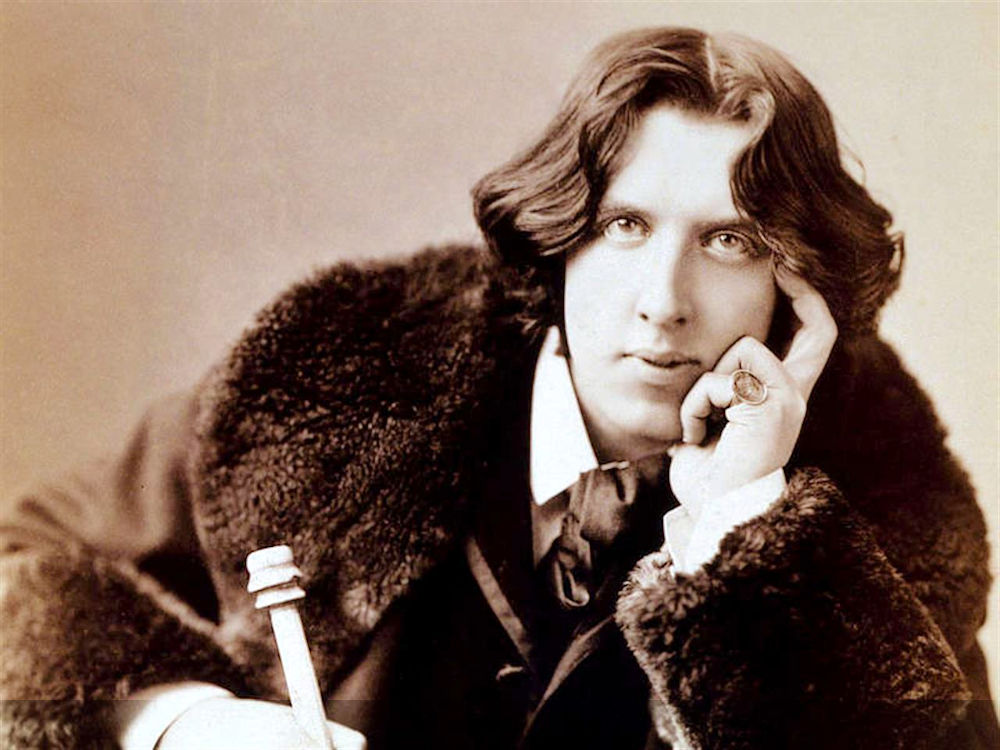
 mong so many artists and lettered, we remember Truman Capote, El Salvador Dali', Edmondo De Amicis, Alexandre Dumas, Gabriel Faure, Anatole France, Andre' Gide, Paul Klee, Gustav Klimt, Luigi Pirandello, Leonardo Sciascia, John Steinbeck, Oscar Wilde.
Among musicians and conductors we remember Johannes Brahms, Leonard Bernstein, Nikita Magaloff, Richard Wagner.
Among the men of cinema, theater and performance we remember Michelangelo Antonioni, Ingmar Bergman, Francis Ford Coppola, Marlene Dietrich, Eleonora Duse, Federico Fellini, Cary Grant, Marcello Mastroianni, Gregory Peck, Tyrone Power.
Among the men of State, magnates of finance and ruling families we remember Willy Brandt, Lord Carrington, Kaiser William II, King Juan II of Bourbon, Urho Kekkonen, Francois Mitterand, Grand Duke Paul of Russia, Rothschild, Humbert I of Italy.
Pietro Rizzo writes in his "Tauromenium" book: "From the Tauro Mount, from the Theater, from the Vergin Mary of the Fortress Church and from the Castle, the sight flows freely from the mountains to the sea and to the coast horizon of the south toward Catania, through the slopes to the smoking crater of the immense and imposing Etna. Northward we could admire the lines of the coast, always beautiful and picturesque, which runs toward Messina. From those different places perspectives open out before our eyes and marvelous landscapes of light and color, fluffy distances and verdant hills, foreshortenings and rural profiles and steep and leaning cliffs, green balconies crowned of white cottages and sea beaches on which the shades of the beach houses are inverted reflected in the water under a clear and dazzling brightness..."
Filippo Calandruccio writes in Beehive: "as reading The Thousand and One Nights one feels himself like Bulukiya, the young sultan who goes around the roads of the world to meet Mohammed and to placate his anxiety of search which will be placated by an island seldom enchantment, very similar to the heaven of the Islam. Now this Taormina, glad island, is reality and it is fable."
mong so many artists and lettered, we remember Truman Capote, El Salvador Dali', Edmondo De Amicis, Alexandre Dumas, Gabriel Faure, Anatole France, Andre' Gide, Paul Klee, Gustav Klimt, Luigi Pirandello, Leonardo Sciascia, John Steinbeck, Oscar Wilde.
Among musicians and conductors we remember Johannes Brahms, Leonard Bernstein, Nikita Magaloff, Richard Wagner.
Among the men of cinema, theater and performance we remember Michelangelo Antonioni, Ingmar Bergman, Francis Ford Coppola, Marlene Dietrich, Eleonora Duse, Federico Fellini, Cary Grant, Marcello Mastroianni, Gregory Peck, Tyrone Power.
Among the men of State, magnates of finance and ruling families we remember Willy Brandt, Lord Carrington, Kaiser William II, King Juan II of Bourbon, Urho Kekkonen, Francois Mitterand, Grand Duke Paul of Russia, Rothschild, Humbert I of Italy.
Pietro Rizzo writes in his "Tauromenium" book: "From the Tauro Mount, from the Theater, from the Vergin Mary of the Fortress Church and from the Castle, the sight flows freely from the mountains to the sea and to the coast horizon of the south toward Catania, through the slopes to the smoking crater of the immense and imposing Etna. Northward we could admire the lines of the coast, always beautiful and picturesque, which runs toward Messina. From those different places perspectives open out before our eyes and marvelous landscapes of light and color, fluffy distances and verdant hills, foreshortenings and rural profiles and steep and leaning cliffs, green balconies crowned of white cottages and sea beaches on which the shades of the beach houses are inverted reflected in the water under a clear and dazzling brightness..."
Filippo Calandruccio writes in Beehive: "as reading The Thousand and One Nights one feels himself like Bulukiya, the young sultan who goes around the roads of the world to meet Mohammed and to placate his anxiety of search which will be placated by an island seldom enchantment, very similar to the heaven of the Islam. Now this Taormina, glad island, is reality and it is fable." 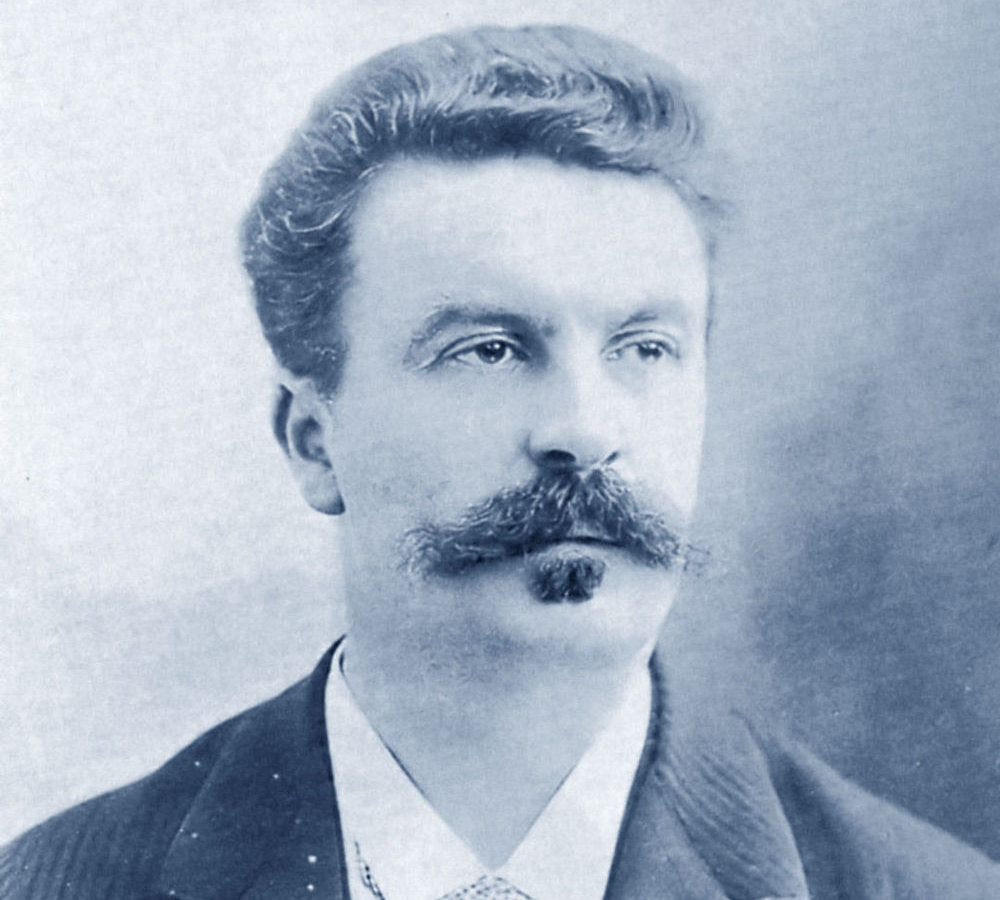
 ohannes Wolfang Goethe writes:
ohannes Wolfang Goethe writes: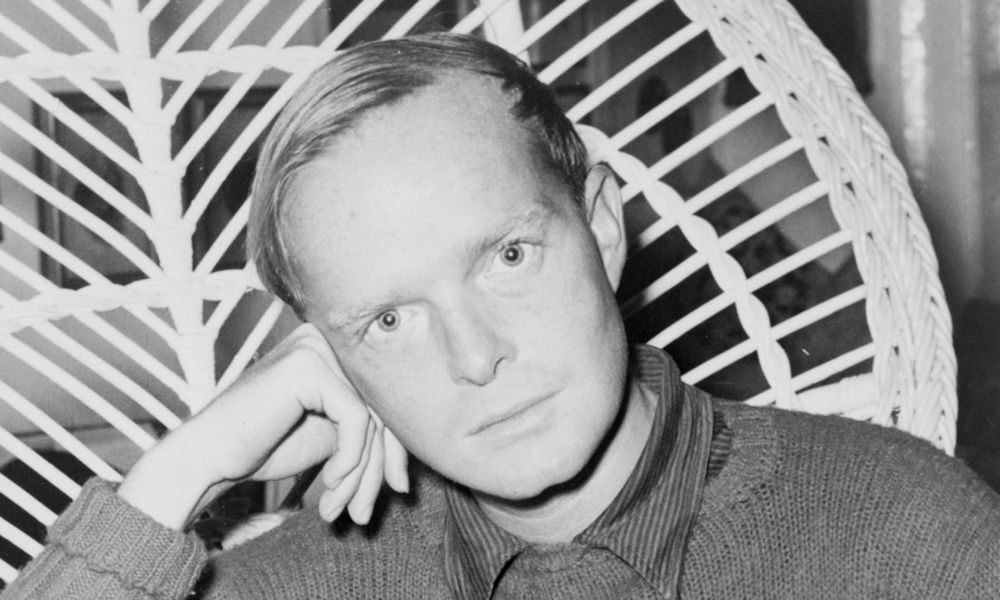
 dmondo De Amicis writes:
dmondo De Amicis writes: